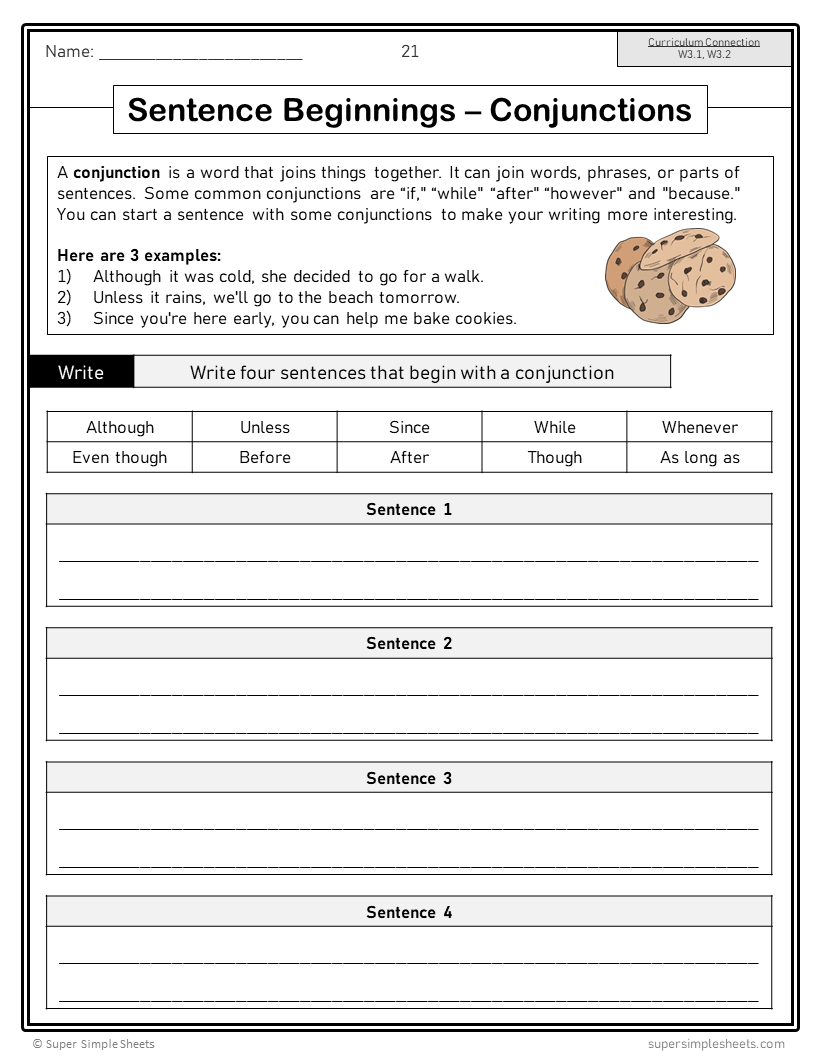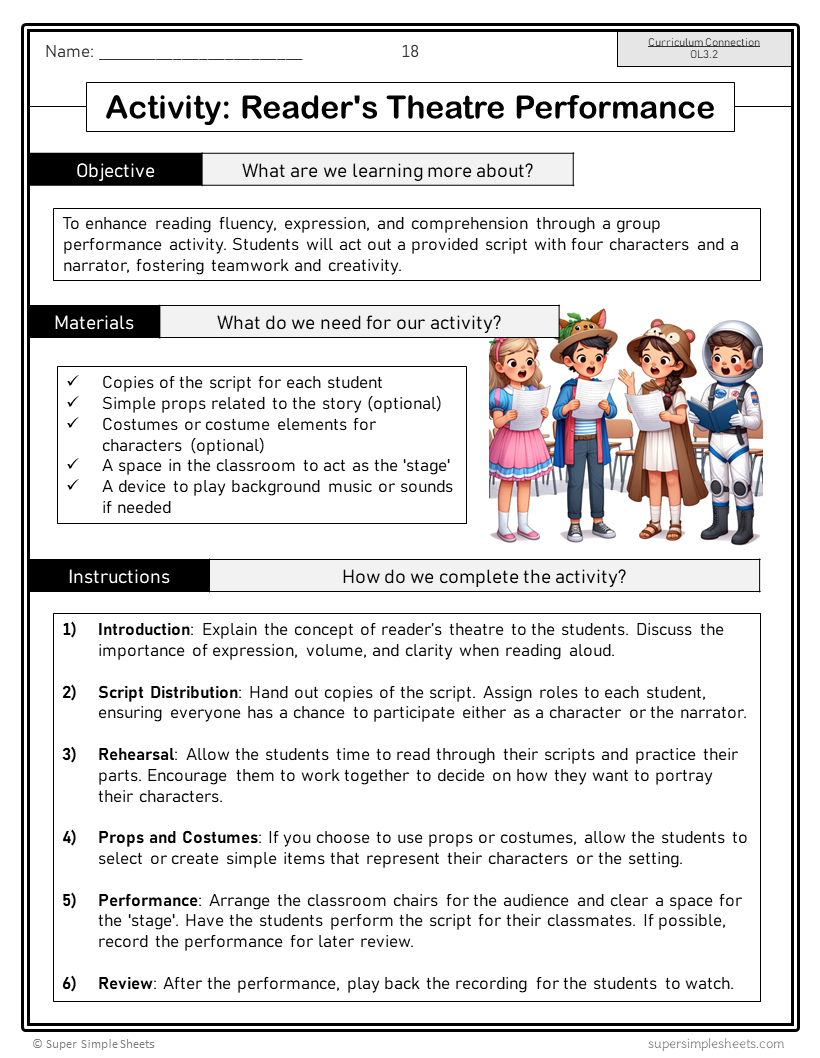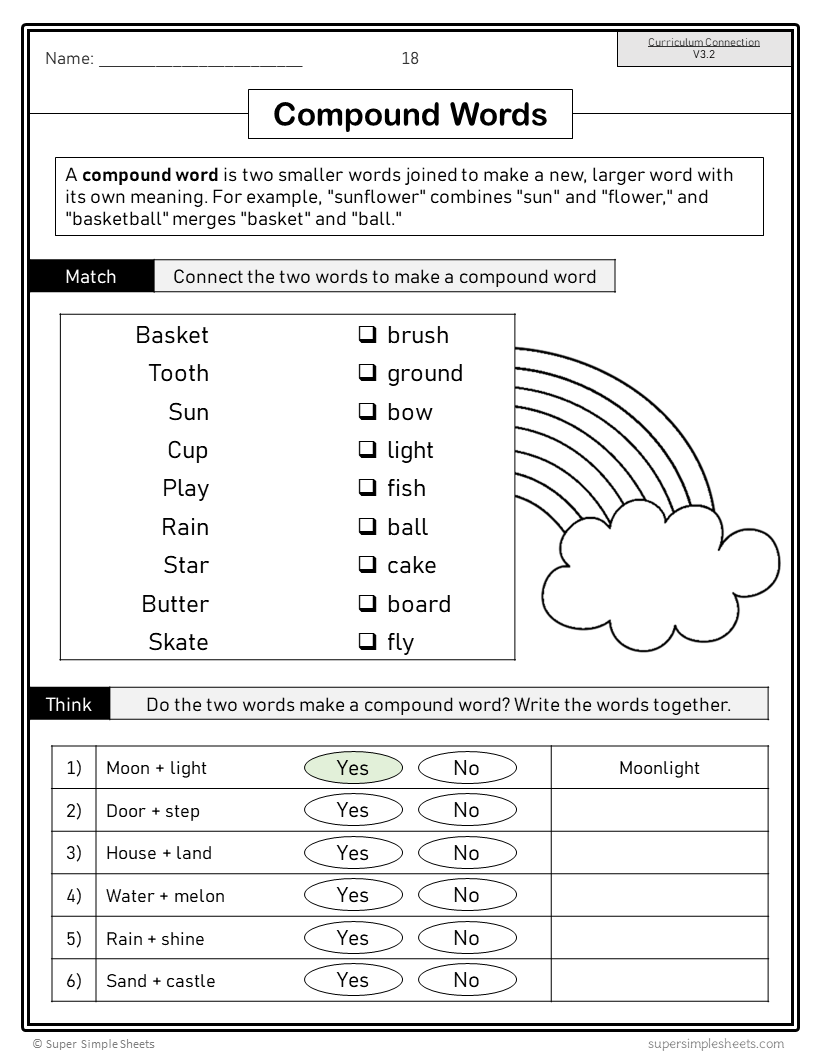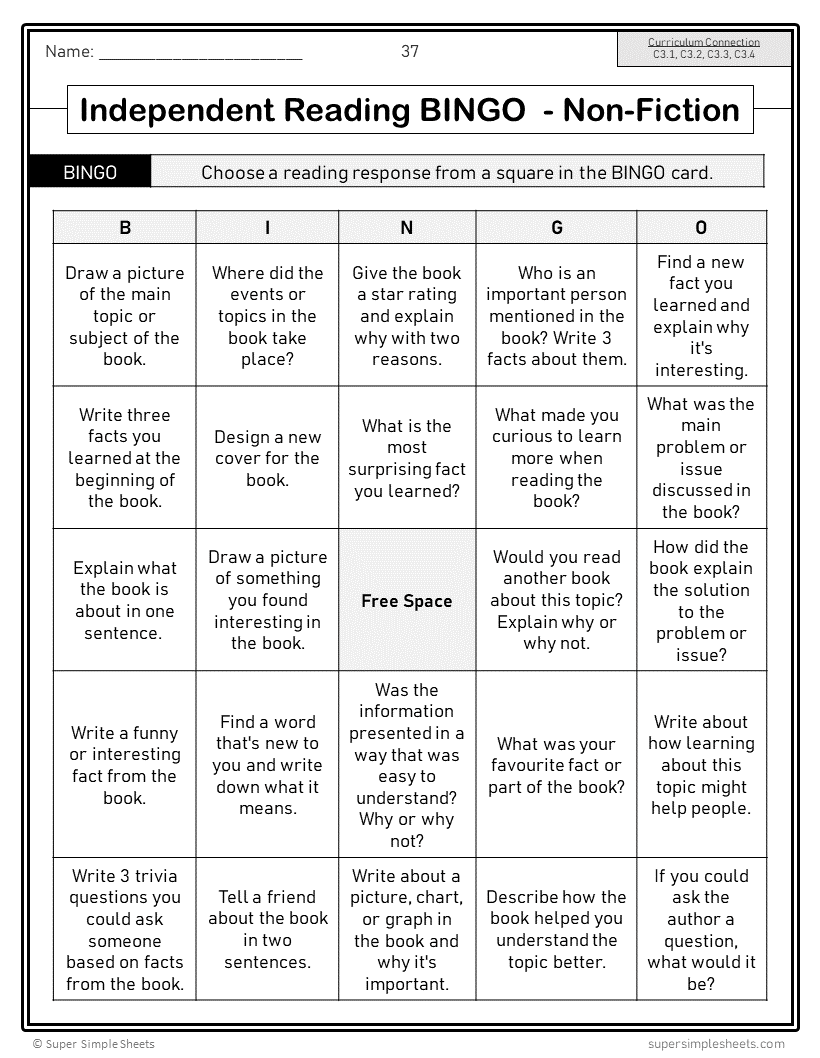Alberta Grade 3 Language Arts ELA - FULL YEAR BUNDLE - NEW 2023 Curriculum
Alberta Grade 3 Language Arts ELA - FULL YEAR BUNDLE - NEW 2023 Curriculum
Interested in a bundle? Shop below instead!
Couldn't load pickup availability
FULL YEAR BUNDLE - Teaching made easy! This NO PREP bundle includes everything you need to teach the NEW 2023 Alberta Grade 3 Language Arts (ELA) Curriculum.
BOTH GOOGLE SLIDES AND PDF VERSIONS INCLUDED!
Grade 3 - New Alberta 2023 Language Curriculum – Text Forms and Structures and Comprehension (ELA). This resource covers all skills and procedures in the organizing ideas: Text Forms and Structures as well as Comprehension. The 280 pages teach the skills and procedures in these two curriculum areas.
We’ve included a variety of activities, including independent reading responses, group activities, assignments, experiments, exemplars, and hands-on activities to keep your students engaged.
Included in this resource are the organizing ideas below:
Text Forms and Structures: taught throughout the unit, with the use of 10 different blocks of text forms, including narratives, reports, poetry, comic strips, letters, procedural writing, book reviews, persuasive writing, and biographies.
Comprehension: as students learn about the text forms and structures of different types of writing, they will practice reading comprehension skills. They will read these different text forms, and use before reading, during reading, and after reading comprehension strategies – inferencing, visualizing, predicting, summarizing, making connections, and questioning. We have also included an independent reading response booklet.
In addition, we have included a full-year long range plan that outlines what concepts from the curriculum you will be teaching each week/block.
Some of the concepts covered:
- What are text forms?
- What is reading comprehension?
- Before reading: comprehension strategies – activating prior knowledge and reasons for reading
- During reading: comprehension strategies – questioning, making connections, inferences, predictions, visualizing
- After reading: comprehension strategies – summarizing, making global and local inferences, visualizing
- Genres in text forms – fiction and non-fiction
- Sub-forms of genres – mystery, myths, realistic fiction, historical fiction, etc.
- Letter writing – emails, formal and informal letters, writing with voice
- Narratives – use of literary devices: similes, hyperbole, and imagery
- Perspective in narratives – first-person and third-person narration
- Narratives – sequencing multiple plots in a story and explaining cause and effect
- Circular plots in story writing
- Character traits in narratives
- Structure in stories – beginning, middle, end
- Indigenous storytelling – learning about different symbols, languages, and values
- Cross-curricular connections – science and social studies (energy, communities, etc.)
- Using facts or opinions in persuasive writing
- Making inferences about persuasive texts
- Text features in reports – index, glossary, timelines, headings, subheadings, etc.
- Linear sequencing and cyclical sequencing in non-fiction texts
- Reports on diversity, inclusion, and accessibility
- Summarizing reports – determining the main idea and supporting details
- Activity – group work summarizing
- Use of infographics, timelines, maps, diagrams, and pictures in reports
- Literary devices used in poetry – hyperbole, imagery, and simile
- Assignment – examining poems written by Indigenous authors
- Understanding haiku, limericks, acrostic poems, cinquain poems, and rhyming poems
- Reading different styles (voices) in book reviews
- Text features in comics, infographics, memes, and maps
- Text features in biographies – using a glossary and indexes to understand a biography
- Biographies – Isaac Newton, Dian Fossey, Thomas Edison, and Edith Monture: index and glossary
- Procedural writing – text forms: lists, title, graphics, and labels
- How graphics improve procedural writing
- Following instructions – drawing a wigwam and a dreamcatcher
- Answer pages for all activities
Grade 3 - New Alberta 2023 Language Curriculum – Vocabulary, Conventions, Phonics, and Fluency. This resource covers all skills and procedures in the organizing ideas: Vocabulary, Conventions, Phonics, and Fluency (ELA). The 409 pages teach the skills and procedures in these four curriculum areas.
Included in this unit are 30 weeks of ELA instruction, with weekly word lists that explicitly teach consonant clusters as well as vowel teams. Along with these Science of Reading principles, we have weaved in the skills and procedures students in grade 3 need to learn while working with these word lists.
Included in this resource are the organizing ideas below:
Vocabulary – figurative language, tier 2 and tier 3 words, synonyms, antonyms, homographs and homophones
Fluency – developing automaticity in reading complex words, phrases, and continuous text. Also, students will read the over 300 high frequency words fluently and with expression, and appropriate pace.
Phonics – consonant clusters at the beginning and ending of words, as well as diagraphs, silent letters, and long/short vowel sounds.
Conventions – sentence types, contractions, apostrophes, grammar, punctuation, and capitalization skills.
In addition, we have included a full-year long range plan that outlines what concepts from the curriculum you will be teaching each week, and what prefixes/suffixes/letter blends will be covered.
Some of the concepts covered:
- Complete sentences versus fragments
- Subject versus predicate
- Simple versus compound sentences
- Suffixes: -ly, -er, -or, -ar, -ist, and more
- Prefixes: re-, un-, in-, dis-, non-, mis-, mal-, sub-, super-, and more
- Parts of speech – nouns, verbs, adjectives, adverbs, pronouns, prepositions, conjunctions
- Four types of sentences – declarative, interrogative, exclamatory, imperative
- Fun weekly word work – word search, crosswords, creating words, coding, word scrambles
- Independent and dependent clauses
- Coordinating conjunctions – FANBOYS
- Complex sentences with adverbial clauses.
- Subject-verb agreement
- Position-based tendencies – I before E
- Differentiate between possessive nouns, possessive adjectives, and possessive pronouns.
- Decoding strategies – chunking unfamiliar words, rhyming words: word families, skip and revisit
- Memorizing irregular grapheme-phonemes ough, ph, ei, and mb
- Using context to understand unfamiliar words
- Using dictionaries to look up word meanings and thesauruses to find synonyms
- Using apostrophes for contractions
- Possessive nouns – using apostrophes for singular nouns and for plural nouns
- Uncommon plural nouns – moose/moose, and person/people
- Spelling patterns – adding –ies, -es, -ves
- Silent letters
- Using commas for direct speech
- Using commas in a list
- Homophones and homographs
- Antonyms and synonyms
- Figurative language – simile, hyperbole, and imagery
- Capital letters: titles, proper nouns, and in dialogue
- Fluency readings for each week to reinforce word list vocabulary
- Weekly quizzes (30 different assessments)
- Answer pages for all activities
Grade 3 - New Alberta 2023 Language Curriculum – Oral Communication. This resource covers all skills and procedures in the organizing idea: Oral Communication (ELA). The 78-page unit includes lesson plans for the teacher, prompts for the students, planning pages, and reflection questions for students to consolidate their understanding.
Included in this unit are 26 activities that are interactive and engaging for grade 3 students. As students complete the activities, they will build on their oral communication skills, obtaining the learning outcome stated in the curriculum. There are several activities provided for each skill and procedure listed in the curriculum.
We are proud to include everything you need to complete these activities. For example, if an activity asks for a story to be read, we provide the story. We’ve also included all emotions, story starters, expressions, and plays (reader’s theatre) you need.
Some of the concepts covered:
- Oral communication – listening strategies
- Activity – Storytelling Circle: Students share stories/traditions from their families
- Activity - Respectful Storytelling Discussion: Listening to stories from different cultures
- Activity – Reader’s Theatre Performance: Students will read a play with expression
- Activity - Dialogue Analysis in a Short Film: How does dialogue improve stories?
- Activity - Pause and Phrase Game: Reading using different expressions with pauses
- Activity - Speech Yoga: Speaking clearly while breathing and stretching
- Activity - Idea Exchange Circle
- Activity - Listening Links: Asking questions to get more information
- Activity - Keyword Bingo: Listening carefully to keywords in stories
- Activity - Charades & Gestures: Message Without Words
- Activity - Reading Emotions Through Body Language
- Activity - Silent Movie Summaries
- Activity - Facial Expressions Circle: Reading facial expressions effectively
- Activity - Speak with Expression
- Activity - Voice Modulation Game: Changing the pitch, tone, and pace of our speech
- Activity - Purposeful Pitch: Sales and Stories: Writing and presenting a sales pitch
- Activity - Who's Listening? Changing our message based on our audience
- Activity - Vocabulary Show & Tell: Using new words in oral communication
- Activity - Grammar Detectives: Speaking using proper grammar
- Activity - Adjective Adventure: Using descriptive language while speaking
- Activity - Logical Story Sequencing: Continuing a story
- Activity - Mini-Presentations: Writing and presenting a speech
- Activity - Memory Poem Performance: Reciting a poem from memory
Grade 3 - New Alberta 2023 Language Curriculum – Writing. This resource covers all skills and procedures in the 2023 Alberta Language Curriculum, within the organizing idea: Writing (ELA).
There are 294 activity sheets that are aligned to cover the learning outcome in the NEW Alberta 2023 Language Curriculum. Included are 10 blocks of content, each covering a different text form. Within each block, the skills and procedures are taught.
This is a language program developed by a language teacher. We have included exemplars for students to use to formulate success criteria so they can improve their writing quality. Moreover, we’ve scaffolded the skills involved with producing quality writing to ensure all students can progress.
In addition, we have included a full-year long range plan that outlines what concepts from the curriculum you will be teaching each week.
Some of the concepts covered:
- Types of text forms – when to use each one (narratives, letters/emails, persuasive, comic strips, reports, etc.)
- Experiment – writing with planning time versus writing without planning time (no brainstorming)
- Sentence beginnings – using adjectives, verbs, adverbs, conjunctions, and prepositional phrases
- Writing descriptive sentences – using adjectives, verbs, adverbs and prepositions
- Revision skills – how to fix run-on sentences
- Revision skills – how to avoid repetition in writing
- Revision skills – writing fluency: ensuring our writing can be read aloud fluently
- Improving boring sentences using prepositions
- Personal voice in writing
- How to write a paragraph – topic sentence (hook), body, conclusion
- Formal versus informal letter writing – voice in our writing
- Purpose and audience in letter writing – effect on our voice
- Narrative writing – beginning, middle, end
- Analyzing quality stories – building success criteria
- How to write dialogue – using quotations and speaker tags
- Using quotations in our narratives – dialogue
- Activity – Story Swap Revision Party
- Understanding persuasive writing
- Activity – Is It Persuasive: Facts Versus Opinion
- Understanding bias in persuasive writing
- Assignment – advertising a new invention
- Report writing – a quick guide
- Activity – Idea Factory
- Writing reports – using the facts provided to organize a report
- Logical order of facts and paragraphs in a report
- How to research online – keywords
- Questioning research strategies – formulating questions to research about a variety of topics
- Activity – Online Treasure Hunt
- Report Writing – writing strong introductions and conclusions
- Types of poems – Haiku, Limerick, Cinquain, and Rhyming Poems (AABB Patterns)
- Assignment – writing a poetry children’s book
- Cursive writing – Limerick
- Examining bias in reviews
- Practicing summaries in book review writing
- Publishing a book review
- Comic strips – onomatopoeia and illustrating graphic texts
- Assignment - creating an online comic strip
- Biographies – cross curriculum: Chief Poundmaker and Nellie McClung (Social Studies) and da Vinci (Science)
- Rubrics for all writing assignments
- Success criteria for all writing assignments – used for student self-assessments
- Cursive writing package – all letters (upper and lowercase)
- Answer pages for all activities
This is a comprehensive bundle that will save you hours of planning! It has everything you need to feel confident that you are covering the NEW Alberta Language Arts curriculum.
Share





I use these for my entire ELA program I really enjoy how easy it is to follow.
I really like how it is organized and broken down this makes it easy to share with parents what specific skills we are working on each week, and really is ready to just print and use.
The writing I really enjoy the variety of projects, and how each topic gets lots of specific skill practice before the end of unit writing assignment and includes a rubric.
The reading, I enjoy that the stories/articles are written at grade level and have a variety of comprehension skills practiced each time, they do follow each genre topic but connections, inferencing, visualization and predictions are hit frequently. The reading and writing line up so teaching them both together flows nicely. (this was an area I struggled with).
Oral communication my students really enjoyed the variety of activities and a handful work cross curricular with wellness and social.
TPT posting includes a bigger preview to see more of what this awesome resource includes, and then come back here to get it in Canadian dollars. :)
Contains everything I need for ELA! Thank you!








